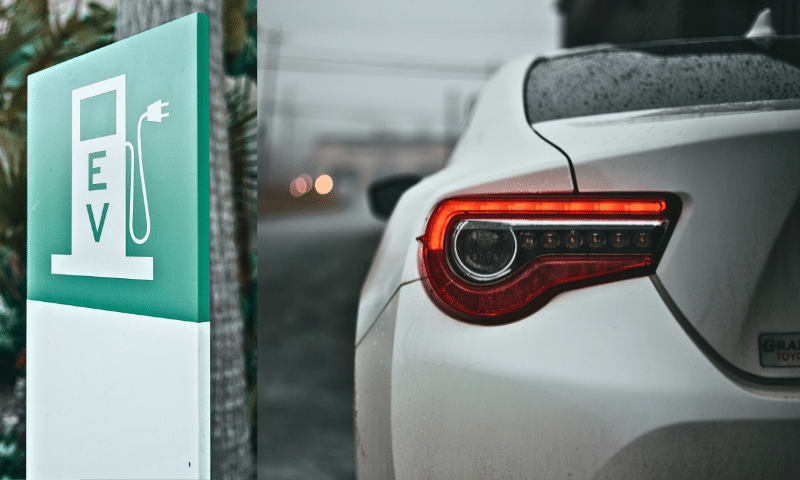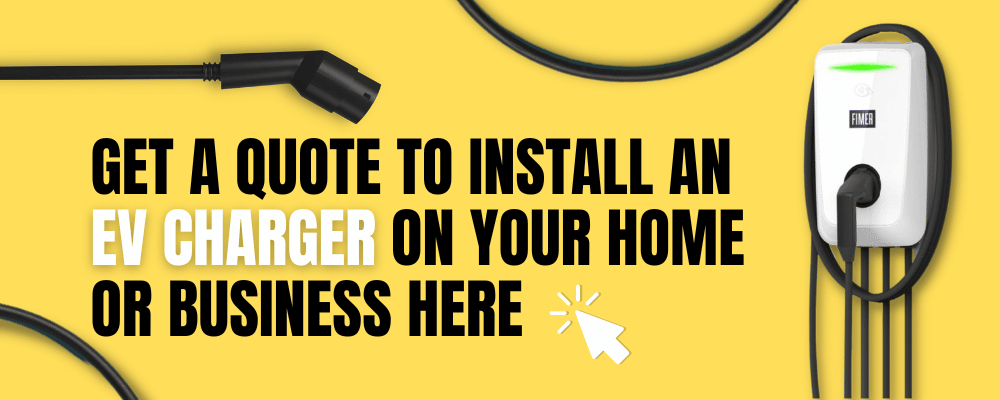
On this page
Electric vehicles (EVs) have gained significant popularity in recent years due to their eco-friendliness and potential to reduce carbon emissions. As more people in Australia switch to electric vehicles, it is crucial to understand the various factors that affect their energy consumption.
Understanding and considering these factors can help maximise the efficiency and range of electric vehicles. As technology advances and infrastructure improves, electric cars are expected to become even more efficient, making them an increasingly viable and sustainable transportation option.
Check out our page to learn about your guide to calculating the energy consumption of an electric vehicle.
Are you ready to convert your next car to an electric vehicle (EV)? Book a test drive now in one of the newest electric vehicles in your location!
Driving conditions
The nature of the roads and traffic congestion can greatly impact an electric vehicle’s energy consumption. Stop-and-go traffic, frequent braking, and accelerating on congested roads tend to increase energy consumption.
Similarly, driving on hilly terrains requires more energy to overcome the gravitational forces. On the other hand, smooth and uncongested roads contribute to better energy efficiency.
High speeds and aggressive acceleration patterns generally result in increased energy consumption for electric vehicles. When driving at higher speeds, the aerodynamic drag experienced by the vehicle becomes more pronounced, requiring more energy to overcome resistance. The gradual acceleration and maintaining a steady speed can help optimise energy efficiency.
Australia’s diverse climate and weather patterns play a significant role in electric vehicle energy consumption. Extreme hot and cold temperatures can affect battery performance and reduce range. Electric vehicles often rely on battery-powered heating or cooling systems, which consume additional energy in adverse weather conditions. Thus, air conditioning usage during hot summers or heating during cold winters can impact energy efficiency.
Battery capacity
Battery capacity directly influences the range of an electric car. The higher the battery capacity, the longer the vehicle can travel on a single charge. Larger battery packs are more suitable for longer trips, while smaller batteries may be sufficient for daily commuting or shorter distances.
Battery chemistry and technology
The type of battery and its chemistry directly influence the energy consumption of electric vehicles. Lithium-ion batteries are the most common battery technology used in EVs due to their high energy density and performance. However, battery chemistry, capacity, and efficiency variations can affect the overall energy consumption. Advancements in battery technology, such as solid-state batteries or improved cathode materials, can enhance energy efficiency and increase driving range.
State of charge and degradation
The battery’s state of charge (SoC) can impact energy consumption. Electric vehicles tend to be less efficient when the battery is close to fully charged or nearly empty. Maintaining the battery within its optimal SoC range can help optimise energy efficiency. Additionally, batteries may experience degradation over time, resulting in reduced capacity and decreased range, thus affecting energy consumption.
Battery Management System (BMS)
The efficiency of the Battery Management System (BMS) in monitoring and managing the battery’s performance affects energy consumption. An effective BMS ensures the battery operates within its optimal range, prevents overcharging or over-discharging, and balances cell voltages. A well-designed BMS can improve the overall energy efficiency and prolong the battery’s lifespan.
Experience a new level of energy savings with Energy Matters Marketplace – your one-stop shop for renewable energy products and more. Whether you’re looking for solar panels, battery storage or outdoor or indoor products. Check out the most popular products we offer and shop now!
Temperature
Extreme hot and cold temperatures can impact the efficiency and range of electric vehicles. The battery’s performance can be reduced in cold weather, leading to increased energy consumption. Similarly, air conditioning or heating systems can consume more energy in hot weather. It is essential to consider temperature variations when estimating the energy requirements for electric vehicles.
Hot weather
High temperatures can affect the electric vehicle’s battery performance in Australia’s scorching summers. Excessive heat can lead to faster battery degradation, reducing its capacity to store and deliver energy. Additionally, the cooling system of an electric vehicle consumes energy to maintain optimal battery temperature, which can contribute to increased energy consumption.
Cold weather
Similarly, cold temperatures can also affect electric vehicle energy consumption. Lower temperatures cause the battery’s chemical reactions to slow, reducing its efficiency. This decrease in efficiency requires more energy to power the vehicle and maintain optimal battery temperature. In extremely cold conditions, electric vehicle owners often rely on battery preheating systems to improve performance, which adds to energy consumption.
Vehicle weight
The weight of an electric vehicle affects its energy consumption. Heavier vehicles typically require more energy to accelerate and maintain speed. The choice of materials used in vehicle manufacturing can influence its weight and subsequently impact its efficiency.
Acceleration and braking
A heavier electric vehicle requires more energy to accelerate, as it needs to overcome inertia. The extra energy expenditure during acceleration can significantly impact overall energy consumption. Similarly, braking in a heavier vehicle generates more kinetic energy, which is typically dissipated as heat. Regenerative braking systems aim to recapture some of this energy, but the vehicle’s weight still affects the overall efficiency.
Range reduction
The weight of an electric vehicle also affects its range or the distance it can travel on a single charge. A heavier vehicle will require more energy to move the same distance, reducing the overall range. This limitation may necessitate more frequent charging sessions or limit the car’s suitability for long-distance travel.
Efficiency improvements
To mitigate the impact of weight on energy consumption, manufacturers are continuously working on improving the efficiency of electric vehicles. Advancements in battery technology, lightweight materials, and aerodynamic designs are some of the strategies being employed to reduce vehicle weight and improve overall energy efficiency.
Driving speed
One of the primary factors influencing electric vehicle energy consumption is driving speed. As with conventional gasoline-powered vehicles, the aerodynamic drag increases significantly with speed. Electric vehicles experience the same phenomenon, albeit with some variations due to their unique design characteristics. Higher speeds result in increased wind resistance, requiring the electric motor to work harder, subsequently consuming more energy. To maximise energy efficiency, it is recommended to maintain a moderate and consistent driving speed, avoiding unnecessary accelerations and decelerations.
In Australia, where long distances between cities are common, driving at high speeds on highways can significantly affect the energy efficiency of electric vehicles. To maximise energy conservation, it is advisable to maintain a moderate driving speed and avoid excessive acceleration. By adhering to speed limits and adopting a smoother driving style, drivers can reduce their energy consumption and extend the range of their electric vehicles.
Tyre pressure
The tyre pressure of an electric vehicle is another crucial factor that affects energy consumption. Properly inflated tyres are essential for minimising rolling resistance, which is the force that opposes the motion of the vehicle. Insufficient tyre pressure increases rolling resistance, requiring the electric motor to work harder to propel the car forward, resulting in higher energy consumption.
Maintaining appropriate tyre pressure is even more important in Australia’s diverse climate conditions. Extreme temperatures can cause tyre pressure to fluctuate, so regular tyre pressure checks are necessary. By ensuring that the tyres are properly inflated according to the manufacturer’s recommendations, EV owners can enhance energy efficiency and extend the driving range of their vehicles.
Route Terrain

The topography of the route plays a vital role in determining the energy efficiency of an electric vehicle. Australia’s diverse landscapes, ranging from sprawling cities to rugged terrains, can significantly influence energy consumption. Here are a few key points to consider:
Urban commuting
In congested city centers, frequent starts and stops due to traffic lights and heavy traffic can decrease energy efficiency. However, regenerative braking systems can partially recover energy during deceleration, mitigating the impact of stop-and-go traffic.
Highway driving
EVs generally perform more efficiently at a steady speed on highways. Flat and well-maintained roads allow electric vehicles to maintain a consistent speed, resulting in optimised energy consumption. Conversely, uphill routes or windy conditions can increase energy usage due to increased resistance.
Off-road and regional travel
In Australia’s vast rural areas, electric vehicles face unique challenges. Uneven terrain, dirt roads, and inclines can lead to higher energy consumption. Furthermore, limited charging infrastructure in remote regions may require careful planning to ensure uninterrupted travel.
Use of accessories and electronics
While electric vehicles are renowned for their efficiency, various accessories and electronic components can impact energy consumption. Here are some factors to consider:
Electric vehicles rely on battery power to operate heating and cooling systems. Extreme weather conditions, such as hot summers or cold winters, can increase the energy demands for comfortable cabin temperatures. Efficient use of climate control settings and pre-conditioning while the vehicle is plugged in can help minimise the impact on energy consumption.
Although these systems consume relatively low power individually, their collective usage can contribute to increased energy consumption. Turning off unnecessary interior lights and optimising infotainment system settings can help conserve energy.
Charging electric vehicles or using auxiliary devices like smartphones or laptops can draw additional power from the battery. While these devices are convenient, it is important to be mindful of their impact on the overall energy consumption of the vehicle.
Charging habits
Charging the vehicle to its full capacity and avoiding frequent partial charging can help maintain battery efficiency. Following manufacturer recommendations and using appropriate charging equipment to optimise energy consumption is important.
The availability and accessibility of charging stations play a vital role in shaping charging habits. Australia has made substantial progress in expanding its charging network, with an increasing number of public charging stations across major cities and highways. However, the density and coverage of charging infrastructure can vary between regions, impacting EV owners’ convenience and charging patterns.
Home charging is a convenient and cost-effective way to replenish an electric vehicle’s battery. The charging habits of EV owners in Australia often revolve around overnight charging at home, taking advantage of off-peak electricity rates. Many EVs come with a charging cable that can be plugged into a standard power outlet. Still, faster charging options like dedicated home chargers or wall-mounted units are also available, reducing charging time significantly.
Workplace charging facilities are becoming increasingly common in Australia, enabling EV owners to charge their vehicles at work. This not only provides a convenient charging option but also extends the driving range of electric vehicles. Employees with access to workplace charging are more likely to rely on it during the day, reducing the need for additional charging stops.
Maintenance
Regular maintenance of an electric vehicle is crucial for optimal energy efficiency. Proper maintenance includes tyre rotations, wheel alignments, and battery health checks.
Additionally, keeping the vehicle in good condition by servicing it at recommended intervals can help prevent mechanical issues that may negatively impact energy consumption.
Proper maintenance of an electric vehicle’s battery is essential for maximising energy efficiency and overall performance. Extreme temperatures can adversely affect battery health, so EV owners in regions with high heat or cold climates should take precautions to protect the battery. Regular software updates from the vehicle manufacturer can also optimise battery management systems, ensuring efficient energy utilisation.
Proper tyre maintenance is crucial for reducing energy consumption in electric vehicles. Underinflated tyres increase rolling resistance, decrease range and increase energy consumption. Regular tyre inspections, including pressure checks and alignments, can help maintain optimal efficiency.
Regenerative braking technology allows electric vehicles to convert kinetic energy into electrical energy while decelerating or braking. This energy can then be used to recharge the battery, increasing the overall efficiency of the vehicle. EV owners can maximise the benefits of regenerative braking by adopting smooth driving techniques and anticipating traffic conditions to optimise energy recapture.
Is solar energy suitable for your home and business?
Energy Matters has been a leader in the renewable energy industry since 2005 and has helped over 40,000 Australian households in their journey to energy independence.
Let us discuss and choose the best quote that suits your needs and budget, and we can connect you with our trusted local installers, who will provide up to 3 FREE quotes for your home and business solar energy system. Get your free quotes today!










































